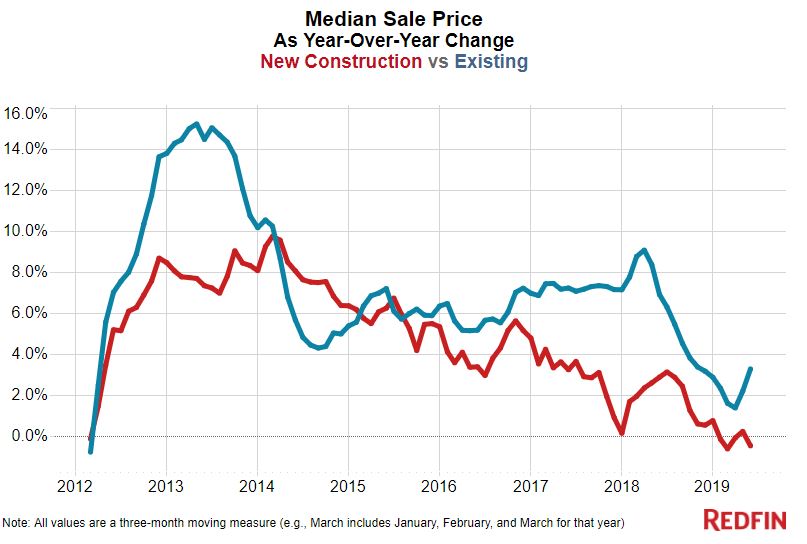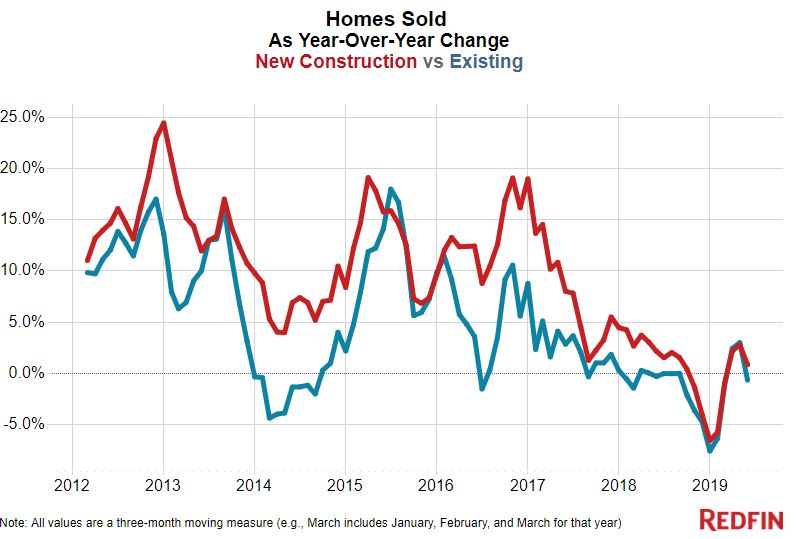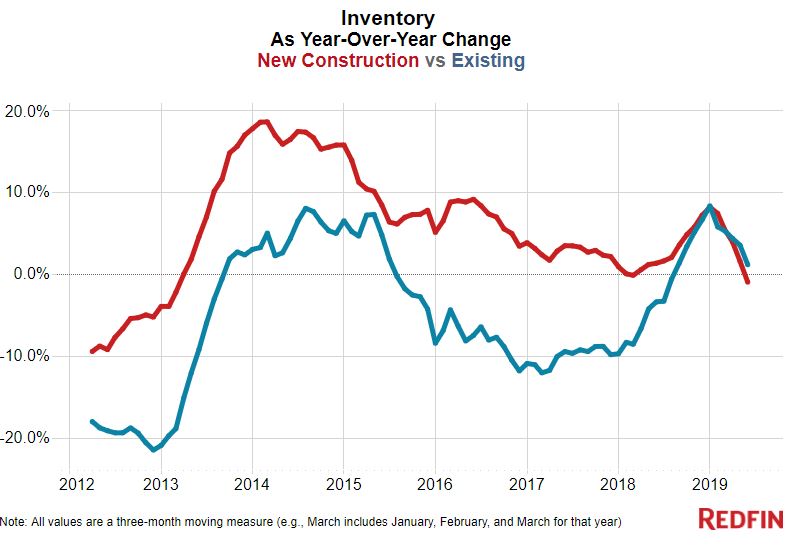The latest data suggest a moderating market for new-construction homes, with prices down slightly and sales posting a small increase as builders adjust their inventory to meet demand for more affordable homes.
Sale prices for newly built homes dropped 0.5 percent year over year to a median of $372,900 in the second quarter of 2019. Prices for new homes have remained largely unchanged throughout the first half of this year after seven straight years of increases. Meanwhile, the median sale price for existing homes rose 3.2 percent in the second quarter to $309,700, continuing a seven-year trend of increasing prices.

Sales of new homes were up slightly, by 0.8 percent year over year, in the second quarter. That’s a reversal of the trend seen in the previous two quarters, when new-home sales dropped. Existing home sales, which were down 0.7 percent in the second quarter, have followed a similar pattern, though sales for existing homes have yet to reverse into positive territory.

Meanwhile, supply of new homes was down 1 percent, the biggest annual decline since the first quarter of 2013. Supply of existing homes was up 1.1 percent in the second quarter, the fourth consecutive quarter of increases.

The small price decline for new homes in the second quarter, along with a 0.7 percent year-over-year decrease in new listings and a 3.4 percent annual drop in building permits, signals that the new-home market remained soft in the second quarter.
“The moderation we’re seeing in new-home prices was expected and follows right along with our observation late last year that builders were finally shifting their focus toward offering smaller, more affordable homes,” said Redfin chief economist Daryl Fairweather. “While this change was a clear and long-needed response to homebuyer demand and tastes amid an affordability crisis and a softening market, it also means that builders are now focused on homes that are less profitable for them. As builders continue to adjust to a less favorable market, along with rising tariffs for building materials and a labor shortage, I expect to see new-home inventory stay low overall. But low mortgage rates and more affordable prices for new homes mean sales could strengthen a bit in the coming months.”
A look at trends in the metro areas with the most new-home sales in the second quarter help explain why prices were essentially flat from a year earlier: Of the 10 metros with the highest sales volume, new-home prices were down in half and up in the other half.
In Houston, the metro with the most new-home sales in the second quarter, the median sale price dropped 1.5 percent year over year to $297,978. Sale prices were also down in Austin (-3.6%; $308,429) and Tampa (-4%; $279,965). But in Atlanta, the metro with the second-most new homes sold, prices were up 5.7 percent annually to $309,900. Prices were up 1.3 percent to $364,500 in Dallas and up 4 percent to $355,000 in Nashville.
Although the nationwide dip in new-home prices in the second quarter was small, there were bigger declines in expensive markets on both coasts. San Jose, one of the most costly metros in the country, recorded a 26.6 percent year-over-year decline in new-home sale prices, the biggest drop of any major U.S. metro tracked by Redfin. It was followed by a trio of sunny coastal metros: West Palm Beach (-16.7%), Honolulu (-13.6%) and Miami (-13.5%). San Diego (-12.5%) and Los Angeles (-8.7%) are also among the 10 metros with the biggest declines in new-home sale prices. San Jose and Los Angeles were also two of just six of the largest 85 metro areas Redfin tracks that saw year-over-year declines in their overall median sale prices in June.
“When there’s a shift in the market, new construction is always one of the first categories to take a hit,” said San Jose Redfin agent Kristen Nowack. “In the San Jose area, overall prices are falling and there are plenty of homes for sale right now, which means buyers may be less likely to pay a premium for new construction. And when one builder starts dropping prices in response to the market, competitors follow suit, which could lead to overall lower prices.”
The places where prices for new homes rose most are mostly less expensive metros such as Greensboro, South Carolina (where prices rose 26.8% year over year), El Paso (12.8%) and Baton Rouge (10.4%).
National new construction trends in the second quarter:
Metro-level highlights for new construction in the second quarter:
See below for a downloadable set of monthly data on new construction prices, sales, inventory and other new residential market statistics. The dataset goes back to 2012.


